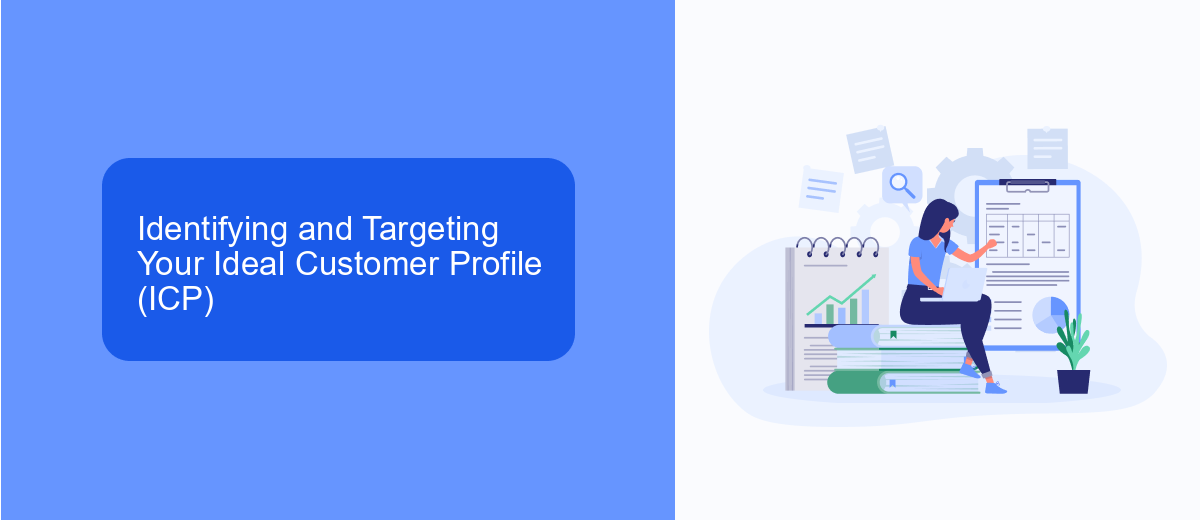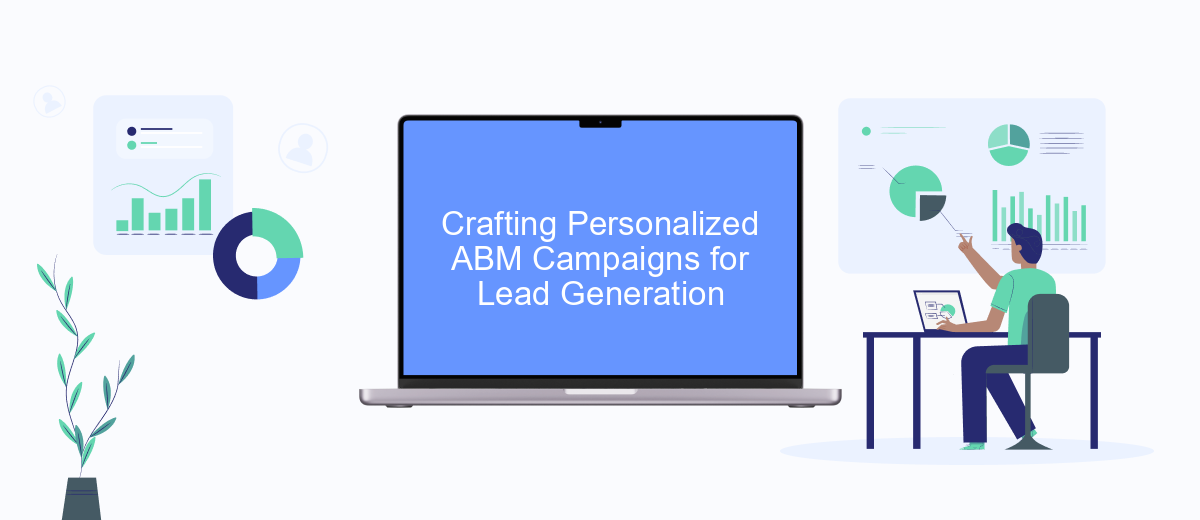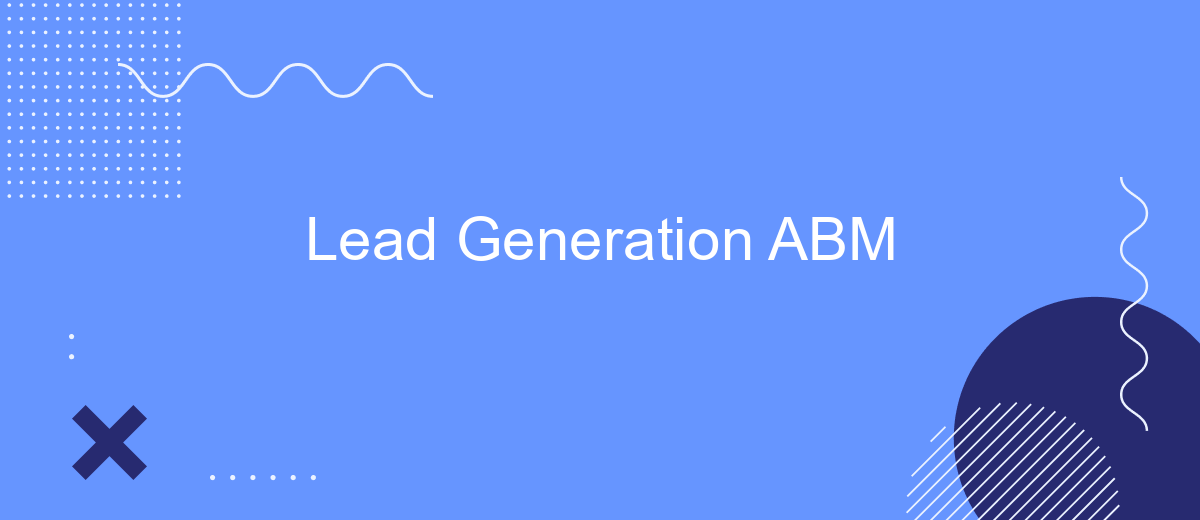Lead Generation through Account-Based Marketing (ABM) is revolutionizing how businesses identify and engage potential clients. By focusing on targeted accounts rather than a broad audience, ABM allows for personalized marketing strategies that resonate with key decision-makers. This approach not only enhances conversion rates but also fosters long-term relationships, making it an essential strategy for companies aiming to optimize their lead generation efforts and achieve sustainable growth.
Understanding Account-Based Marketing (ABM) and Lead Generation
Account-Based Marketing (ABM) is a strategic approach that focuses on identifying and targeting key accounts within a market, rather than casting a wide net to attract a broad audience. This method allows businesses to tailor their marketing efforts to specific accounts, thereby increasing the likelihood of conversion and fostering deeper relationships. ABM aligns marketing and sales teams, ensuring that their efforts are concentrated on high-value targets that are more likely to result in successful outcomes.
- Focuses on high-value accounts rather than a broad audience.
- Aligns marketing and sales efforts for better results.
- Enables personalized and targeted marketing strategies.
- Improves conversion rates by concentrating on key accounts.
- Fosters long-term relationships with targeted accounts.
Lead generation in the context of ABM involves identifying potential leads within these targeted accounts and nurturing them through personalized marketing strategies. By focusing on quality over quantity, businesses can efficiently allocate resources to engage with prospects that are more likely to convert. This targeted approach results in more meaningful interactions and a higher return on investment, as marketing efforts are concentrated on those most likely to benefit from the product or service offered.
Identifying and Targeting Your Ideal Customer Profile (ICP)

Identifying and targeting your Ideal Customer Profile (ICP) is a crucial step in any Account-Based Marketing (ABM) strategy. Start by analyzing your current customer base to identify common characteristics among your most successful clients. Consider factors such as industry, company size, and revenue, as well as specific challenges they face that your product can address. This analysis will help you create a detailed ICP that serves as a blueprint for finding similar prospects who are more likely to convert into high-value customers.
Once your ICP is defined, leverage tools and platforms to effectively target these ideal prospects. Use data-driven insights to refine your outreach and personalize your messaging. Integrations can play a significant role in streamlining this process. For instance, SaveMyLeads can automate lead data transfer between your marketing and sales platforms, ensuring that your team has up-to-date information to engage with potential customers effectively. By focusing on your ICP, you can allocate resources more efficiently, enhance customer acquisition efforts, and ultimately drive better results for your ABM campaigns.
Crafting Personalized ABM Campaigns for Lead Generation

In the world of Account-Based Marketing (ABM), crafting personalized campaigns is crucial for effective lead generation. Personalization allows marketers to tailor their messaging and outreach strategies to meet the specific needs and preferences of target accounts, enhancing engagement and conversion rates. By leveraging data-driven insights, businesses can create campaigns that resonate with their audience, fostering stronger connections and driving growth.
- Identify and prioritize high-value target accounts based on criteria such as industry, revenue potential, and strategic fit.
- Develop detailed buyer personas for each target account to understand their challenges, goals, and decision-making processes.
- Create customized content and messaging that addresses the unique needs and pain points of each account.
- Utilize multi-channel outreach strategies, including email, social media, and personalized web experiences, to engage with target accounts effectively.
- Continuously monitor and analyze campaign performance to refine and optimize personalization efforts.
By focusing on personalization, businesses can enhance the effectiveness of their ABM campaigns, resulting in higher-quality leads and improved return on investment. Tailored strategies not only capture the attention of potential clients but also build lasting relationships, setting the foundation for long-term success in lead generation.
Leveraging Multi-Channel Engagement for ABM Lead Generation

In the dynamic landscape of Account-Based Marketing (ABM), leveraging multi-channel engagement is crucial for effective lead generation. By utilizing various platforms and communication channels, businesses can create a cohesive strategy that reaches potential leads at multiple touchpoints. This approach not only enhances visibility but also fosters deeper relationships with target accounts.
Implementing a multi-channel strategy requires a thorough understanding of where your audience spends their time and how they prefer to engage. By aligning your messaging and content across these channels, you can ensure consistent and personalized interactions that resonate with your audience. This consistency helps build trust and credibility, essential components in converting leads into loyal customers.
- Email marketing for personalized communication.
- Social media for engaging and interactive content.
- Webinars and virtual events for in-depth discussions.
- Content marketing to provide valuable insights.
- Direct mail for a personal touch.
By integrating these channels into your ABM strategy, you create a powerful ecosystem that supports lead nurturing and conversion. Each channel complements the others, offering multiple opportunities to engage with your audience and move them through the sales funnel. This holistic approach not only maximizes reach but also optimizes the lead generation process.
- Automate the work with leads from the Facebook advertising account
- Empower with integrations and instant transfer of leads
- Don't spend money on developers or integrators
- Save time by automating routine tasks
Measuring and Optimizing ABM Lead Generation Results
To effectively measure the success of ABM lead generation, it is crucial to establish clear KPIs that align with your business objectives. Key metrics such as engagement rates, account penetration, and conversion rates should be closely monitored. Utilizing advanced analytics tools can provide insights into the performance of targeted campaigns, allowing you to identify which strategies are driving the most valuable leads. Regularly reviewing these metrics helps in fine-tuning your approach, ensuring that resources are allocated efficiently to maximize ROI.
Optimizing ABM lead generation involves leveraging integration tools to streamline processes and enhance data accuracy. Services like SaveMyLeads can automate data transfer between platforms, ensuring that your CRM is always up-to-date with the latest lead information. This seamless integration not only saves time but also reduces the risk of errors, allowing your team to focus on nurturing high-potential accounts. By combining data-driven insights with efficient workflow automation, you can continuously refine your ABM strategies to achieve better results.
FAQ
What is Account-Based Marketing (ABM) in lead generation?
How does ABM differ from traditional lead generation?
What are the key components of a successful ABM strategy?
How can automation tools enhance ABM efforts?
What metrics should be tracked to measure the success of an ABM campaign?
Use the SaveMyLeads service to improve the speed and quality of your Facebook lead processing. You do not need to regularly check the advertising account and download the CSV file. Get leads quickly and in a convenient format. Using the SML online connector, you can set up automatic transfer of leads from Facebook to various services: CRM systems, instant messengers, task managers, email services, etc. Automate the data transfer process, save time and improve customer service.

